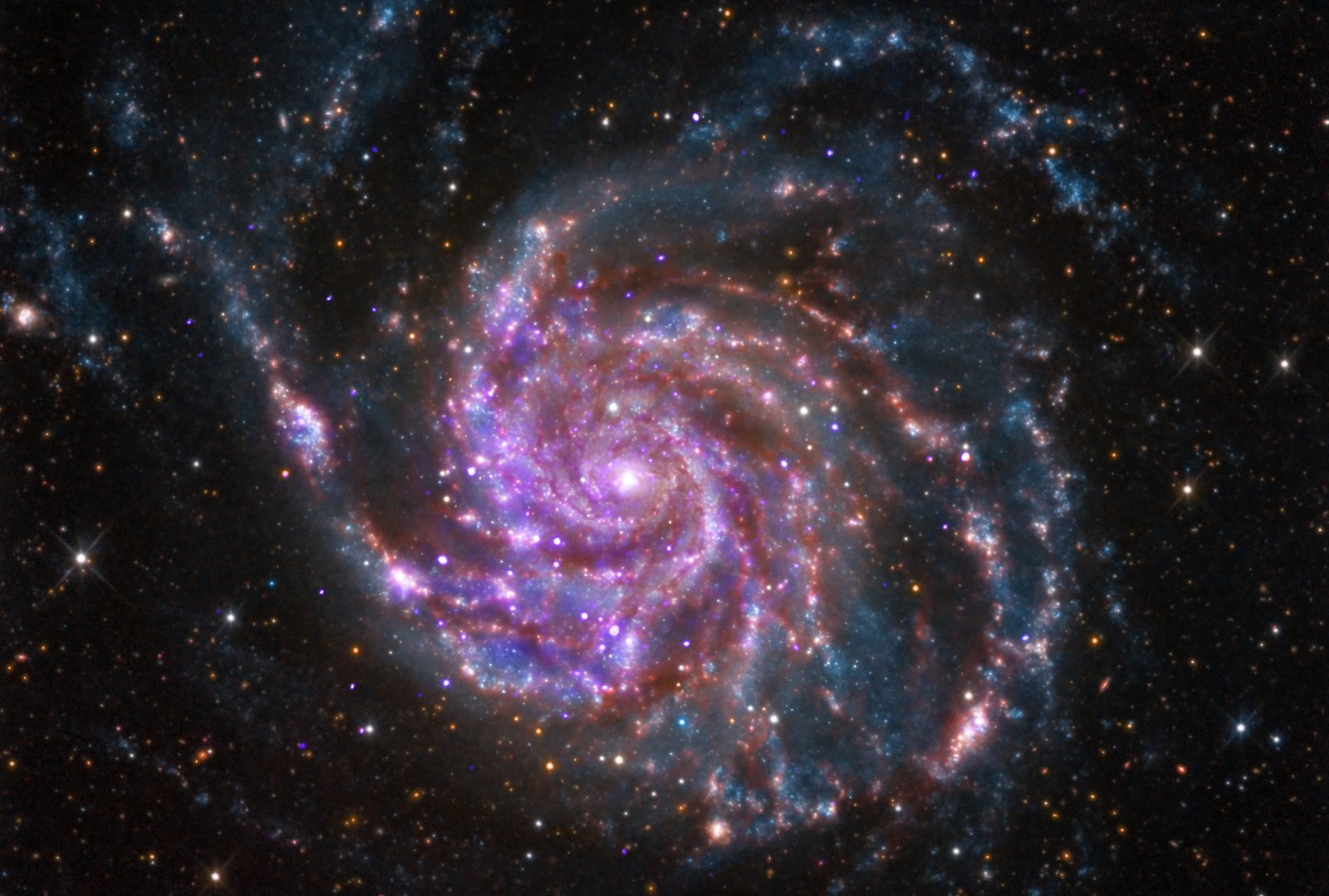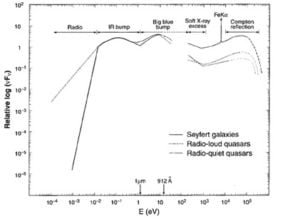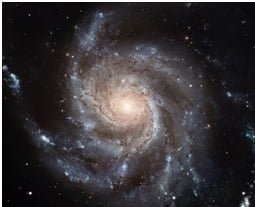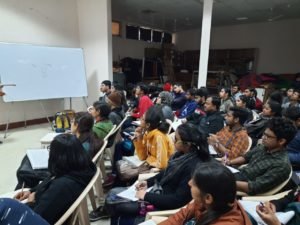A Black Hole of Gargantuan Proportion at the Centre of Galaxies
A Black Hole of Gargantuan Proportion at the Centre of Galaxies from this distant vantage point, the galaxy looks like a calm, giant disc of rotating gas. But if you look closely at the picture, the central region looks extremely bright as compared to other part of the galaxy. Why is it so bright ? Is it that a higher concentration of stars give immense brightness to the central region.

A Black Hole of Gargantuan Proportion at the Centre of Galaxies
The answer is not only a resounding ‘NO’ but also points towards the existence of some esoteric objects which we famously call as black hole. Black Holes comes in all sort of flavors, but we are primarily concerned with classification of Black Holes in terms of Mass.
(1)- Stellar Black Holes – These are primarily thought to be about 10 to 100 Solar masses in weight
(Solar Mass is a unit which we often encounter in astronomy and it refers to the mass of our sun ). It has been well documented that these stellar black holes form from the collapse of a dying star which has exhausted all it’s fuel.
(2) – Intermediate Black Holes- These intermediate black holes generally lies from 1000 – 10000 Solar masses.
(3) Supermassive Black Holes – These are probably the most massive black holes which rein in at the center of almost all galaxies. One of the most challenging problem in astronomy is the presence of these supermassive sized black holes at about 800 million years after the Big Bang.
(A smaller black hole takes a longer time as compared to these supermassive black holes).
Are these supermassive black holes formed from the collapse of a supermassive star ? Was it a stellar black hole which ‘sucked in’ (astronomers prefer to call it accreted) matter quickly and grew in size? Or was it a rapid merging of stellar black holes into supermassive black holes. Unfortunately all these models comes with a caveat and none of them have explained the presence of these supermassive black holes in such an early time.
A Black Hole of Gargantuan Proportion at the Centre of Galaxies
Active Galactic Nuclei (AGN)
Astronomers use a fancy name for the system of Supermassive Black Hole and the host galaxy. They refer to it as Active Galactic Nuclei. The name is self explanatory – Active because it’s giving off emission , Nuclei because it’s located at the center of galaxy.
A general question which arises in everyone’s mind is that a black hole is thought to be extremely dark. Because it traps even the light inside it owed to the fact that escape velocity of a black hole is higher then the speed of light. So why is the central region so bright ?
Well the answer is accretion disc. Have you ever wondered that even though the Sun pulls the earth towards itself, the earth never falls into the sun but rather goes around it. The explanation to that is simple – Angular momentum. Since the earth has some initial angular momentum, it just goes around the sun rather than falling into it.
This simple fact has a profound implication for a black hole system. Matter falling into the black hole instead of directly getting sucked into the black hole, goes around it forming a 2 dimensional geometrically thin, optically thick disc which we famously refer to as the ‘accretion disc’. Once matter has settled into the accretion disc, it is acted upon by viscous forces which forces them to lose their angular momentum and begin their final journey into the Black Hole.
Observational evidence of existence of Super Massive Black Hole at the center of Galaxy
- An international team of astronomers carried out the observation of motion of stars at the center of our own Galaxy (The video is available on YouTube and the title is – “Motion of S2 and other stars around the central Black Hole”).
- From figure (2), which is a screenshot of the actual video, we can see that the stars are traversing an elliptical path around an unknown dark region. From simple Newtonian mechanics, one can work out the mass of the central region and can infer that there is an extremely compact object located at the center of our own galaxy.
- There is a limit to human capabilities since we are on a tiny planet of an average star of an even smaller Galaxy, but we have invented telescopes and the capabilities to resolve those lights which gives us an extraordinary advantage to probe the universe.
- Figure (3) shows the spectroscopic image of a distant AGN. One of the most striking feature of the graph is that it shows a consistently high flux in almost all part of electromagnetic spectrum, which points towards the fact that there is a plethora of Physical processes going on in that comparatively tiny region of the galaxy .
- One of the most puzzling problem of AGN physics is that the emission from these black holes tends to vary a lot in their amplitude. What causes them is yet to be ascertained.
- But the variability has helped to constrain the size of the emitting region. Based on the continuity argument one can conclude that the size of the limiting region cannot be greater than c (T). This concludes that the object at the center is an extremely compact object.
This is probably a great time to be alive at least for people interested in Black Hole Physics. Not only do we have conventional telescopes in the electromagnetic frequency to probe the nuts and bolts of AGN physics, we also have gravitational wave observatory to complement our observational results.
As we continue to advance the development of supercomputers, new and probably revolutionary results are expected to come out of it. The world of Black Hole physics needs original thinkers to probe these esoteric object and advance our understanding of them. After all ‘ We are the only ways for the cosmos to know itself’ .
 A Black Hole of Gargantuan Proportion at the Centre of Galaxies
A Black Hole of Gargantuan Proportion at the Centre of Galaxies
Fig 2 – motion of stars around the center of our own galaxy
 A Black Hole of Gargantuan Proportion at the Centre of Galaxies
A Black Hole of Gargantuan Proportion at the Centre of Galaxies
(The author is working as a Graduate Teaching Assistant in Astronomy at Creighton University, USA and can be contacted at san77182@creighton.edu )
http://scienceteen.com/life-cycle-of-starswondered-about-the-mysterious-twinkling-stars/
http://scienceteen.com/hundred-years-of-cosmology/
http://scienceteen.com/gravity-gurutvakarshan-and-black-hole/



